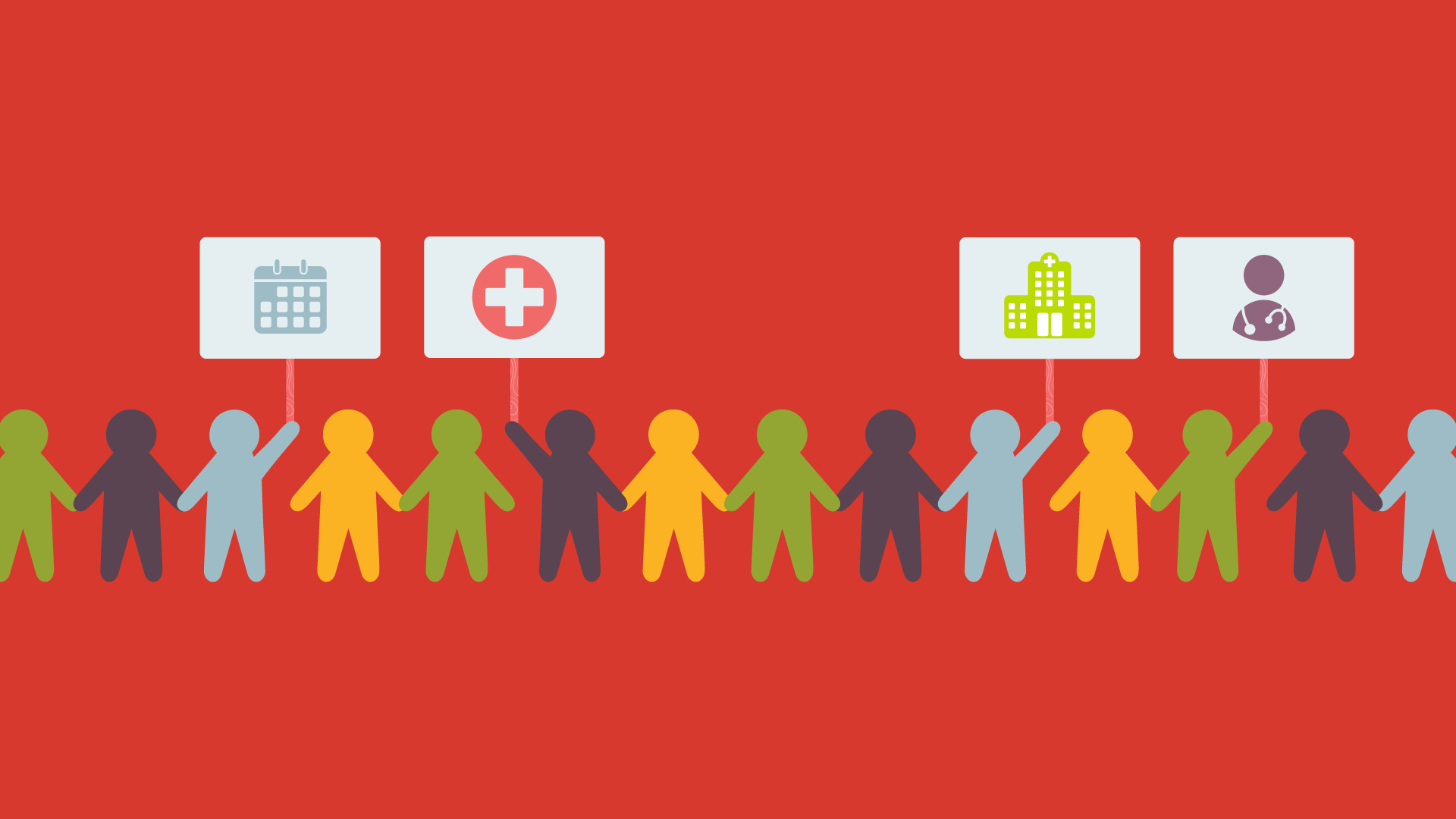Despite having dedicated marketing teams, many large medical institutions still stay true to traditional branding and advertising. From the perspective of today’s healthcare marketers, this approach is questionable—it leads to overlooking the massive power of modern digital marketing.
Why does this matter? The fast-paced digital era has changed the habits of patients. Their patience wanes when faced with issues of finding and accessing healthcare services and drives their focus towards more approachable options. Because of this, hospital marketing campaigns should present different service lines in a way that patients find convenient.
Hospital executives may be tempted to place the shift from traditional to modern marketing strategies on a low priority list. However, neglecting service-line specific marketing tools leaves the door open for your smaller and nimbler competition to siphon off your patients, often the patients representing the highest revenue! Hospitals that continue to neglect modern tools to market their services lines will come to feel it in their bottom line.
Are Your Patients Familiar with The Scope of Your Services?
Hospitals often offer as many different service lines as possible to provide more comprehensive care to patients. However, many hospitals are still not addressing the challenge of effectively promoting these service lines and making them easy to find. Potential patients who search for healthcare on Google or social media will choose from what they see, and if your hospital lacks visibility, you’ll miss out on many opportunities.
That’s why you need to broaden your focus through enhanced hospital marketing campaigns, ensuring patients know what you offer and how they can access it. This will help your patients make more informed decisions and prevent your hospital from missing out on patients in need of your specialized services.
 Sharpening the Focus: Align Your Business and Marketing Goals with Service Lines
Sharpening the Focus: Align Your Business and Marketing Goals with Service Lines
Service lines need to be part of a bigger plan to truly make a difference. Hospitals should remember the old sports team rule here—every player has a role but must work together to win. This means connecting the dots between the hospital’s main goals, each service’s specifics, and how you tell the world about these services.
Aligning your business goals with service lines means every part of the hospital moves in the same direction. It’s about ensuring that efforts in specific areas, like the cardiology department or ENT department, are backed by the whole hospital’s support, from funding to the staff.
Marketing these services requires the same team effort. Instead of one general message, hospital marketing campaigns should tell the unique stories of each service, like highlighting the advanced technology in the Surgical Intensive Care Unit or the warm, caring environment of the maternity ward.
When a hospital’s services, business goals, and marketing move together, the outcome is a cohesive strategy with amplified reach, higher patient satisfaction, and better ROI. This is essential for positioning your hospital as a leader in the healthcare market and becoming the go-to place for specific healthcare needs.
One Service Line – One Strategy
Let’s circle back to the importance of telling each service line’s unique story. To make these stories resonate with your audience, you need a marketing strategy—not just one for all, but a separate strategy for each service line. Why is this important? Because what works for promoting pediatric care might not be as effective for orthopedics.
Think of it this way: you wouldn’t advertise a kids’ toy in the same way you’d market a retirement plan. Each service line needs its own approach, tailored for the people it’s meant to help. For example, hospital marketing campaigns for maternity services can use social media to share patient stories and information about prenatal classes, which will interest future parents. On the other hand, a joint replacement clinic might focus on success stories and rehabilitation, which are more critical to elders.
The goal is to ensure that people know and understand the benefits of these services. By developing separate marketing strategies with clear goals, a defined audience, and unique content based on the specifics of each service line, you can effectively connect with your patients, leading to better care and healthier communities.
Personalize Approach to Each Audience Segment
You may assume that one service line equals one target group. That’s not always the case. When implementing hospital marketing campaigns, one size does not fit all. Every patient group has its own needs and preferences, especially when it comes to how they find and use healthcare services. For example, orthopedic clinics attract young athletes as well as older demographics. This juxtaposition demonstrates the need for different targeting approaches within the same service line.
The key is to understand these different groups. This means including characteristics like age, lifestyle, and how they like to get information when developing a marketing approach. Creating patient personas can help with this. Imagine a typical patient for each group: What are their main concerns? Where do they spend their time online? What kind of information do they value? Answering such questions will help you build precise patient group profiles with their habits and needs.
By tailoring your marketing strategies to fit each group’s unique needs, you’re more likely to engage them effectively. Next, we’ll see how this personalized approach works in action with targeted advertising, ensuring that the right services reach the people who need them the most.
Targeted Advertising: Knockin’ On a Patient’s Door
Targeted advertising lets you send the right messages to the right patients at the right time. Using advanced targeting methods such as predictive targeting can ensure your campaigns reach those most likely to need these exact service lines.
For instance, ads for a children’s health clinic should pop up to young families in the area, while information about arthritis treatments could be sent to the older demographic or even their family members. This focused approach means ads are more relevant and more likely to get a response, positively affecting your patient acquisition.
As part of hospital marketing campaigns, your ads need to speak directly to what potential patients are looking for, whether that’s helpful health tips or stories from other patients. Besides spreading the word, it also builds a connection with the community, making it easier for patients to choose the hospital when they need care.
Google Business Profiles: Why Stop at One?
Did you know that Google is used for an astonishing 70,000 healthcare searches every minute? Search engine visibility is crucial for healthcare businesses, and setting up a Google Business Profile (GBP) is an extremely lucrative strategy that significantly contributes to your local search engine optimization (local SEO), helping you become an easy pick in your community.
However, considering your size, one GBP may not simplify your patient’s healthcare journey. So, instead of having just one GBP for the whole hospital, setting up separate profiles for different departments, services, and even doctors can be practical when implementing hospital marketing campaigns. This way, patients get the necessary information, like specific treatments and information, without sifting through everything else.
Having multiple profiles increases the likelihood of appearing in search results, which leads more patients to your services. Specialized service line GBPs allow you to provide a comprehensive picture for potential patients, making your hospital look even more reliable and helpful online. In short, specialized GBPs bring you better visibility and are beneficial to both potential patients and your healthcare business.

This approach enhances your patients’ experience before they even step through your doors. By tailoring each profile to the unique offers of your corresponding service line, you’re providing a clear, direct path to the information and care patients are seeking.
Create Hospital Marketing Campaigns That Resonate
Gone are the days of one broad hospital marketing strategy that hovers over everything but doesn’t truly cover anything. Shifting the focus to your service lines and their target audiences ensures patients can find and understand what you offer.
So, where’s your hospital on this map of crossing paths your patients need to take to get the care they need? To stop being hard to find, you must implement hospital marketing campaigns with a sharper focus on bringing the specific care right to the patients who need it. Of course, to do that, integrating innovative marketing tools should be your next big step.
SocialClimb’s comprehensive healthcare marketing platform can help you take that step and continue to implement efficient marketing campaigns. It allows you to easily manage all of your online listings (GBPs included), promote specific service lines, and engage with your patients more directly. You can track the results of your campaigns in a HIPAA-compliant way, automate your reporting and data analysis, and ensure precise audience targeting for all hospital marketing campaigns. Relying on a healthcare-specific platform makes it easier to keep up with modern digital trends, helping you save time and money while making your marketing strategies modern.











